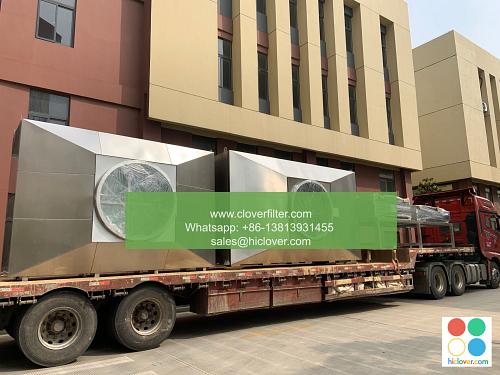Ways on how to Maintain Indoor Air Hygiene and Ventilation Systems after Changing Airfilter30

After changing your air filter, it’s essential to prioritize indoor air quality and maintain your ventilation systems to ensure a healthy and comfortable living or working space. In this article, we’ll explore the best ways to maintain indoor air hygiene and ventilation systems, highlighting various application areas such as residential buildings, commercial spaces, and industrial facilities.
Regular Maintenance: The Key to Clean Air
Regular maintenance is crucial to prevent the buildup of air pollutants, allergens, and microorganisms in your ventilation system. This includes:
* Inspections: Regularly inspect your ventilation system for signs of damage, wear, and tear.
* Cleaning: Clean your ventilation system, including ducts, coils, and fans, to prevent the accumulation of dust, debris, and microorganisms.
* Filter replacements: Replace your air filters regularly, typically every 1-3 months, depending on the type of filter and usage.
Effective Ventilation Strategies
Proper ventilation is essential to maintain indoor air hygiene. Consider the following strategies:
* Natural ventilation: Open windows and doors to allow fresh air to circulate and stale air to escape.
* Mechanical ventilation: Use exhaust fans, whole-house fans, or heat recovery ventilation systems to remove stale air and introduce fresh air.
* Heat recovery ventilation: Install a heat recovery ventilation system to recover heat energy from exhaust air and transfer it to fresh air.
Indoor Air Quality Monitoring
Monitoring indoor air quality is vital to identify potential issues and take corrective action. Consider using:
* Indoor air quality sensors: Install sensors to monitor temperature, humidity, CO2 levels, and particulate matter.
* Air quality meters: Use portable meters to measure ambient air quality and detect potential pollutants.
Application Areas: Residential, Commercial, and Industrial
Maintaining indoor air hygiene and ventilation systems is crucial in various application areas, including:
* Residential buildings: Homes, apartments, and condominiums require regular maintenance to prevent the buildup of allergens and air pollutants.
* Commercial spaces: Offices, retail stores, and restaurants need effective ventilation systems to maintain indoor air quality and prevent occupant complaints.
* Industrial facilities: Manufacturing plants, warehouses, and laboratories require specialized ventilation systems to control hazardous air pollutants and maintain a safe working environment.
Conclusion: Prioritize Indoor Air Hygiene
Maintaining indoor air hygiene and ventilation systems is essential to ensure a healthy and comfortable living or working space. By following regular maintenance schedules, implementing effective ventilation strategies, and monitoring indoor air quality, you can prevent the buildup of air pollutants and allergens. Remember to prioritize indoor air hygiene in various application areas, including residential, commercial, and industrial settings, to create a healthier and more productive environment. Prompt

